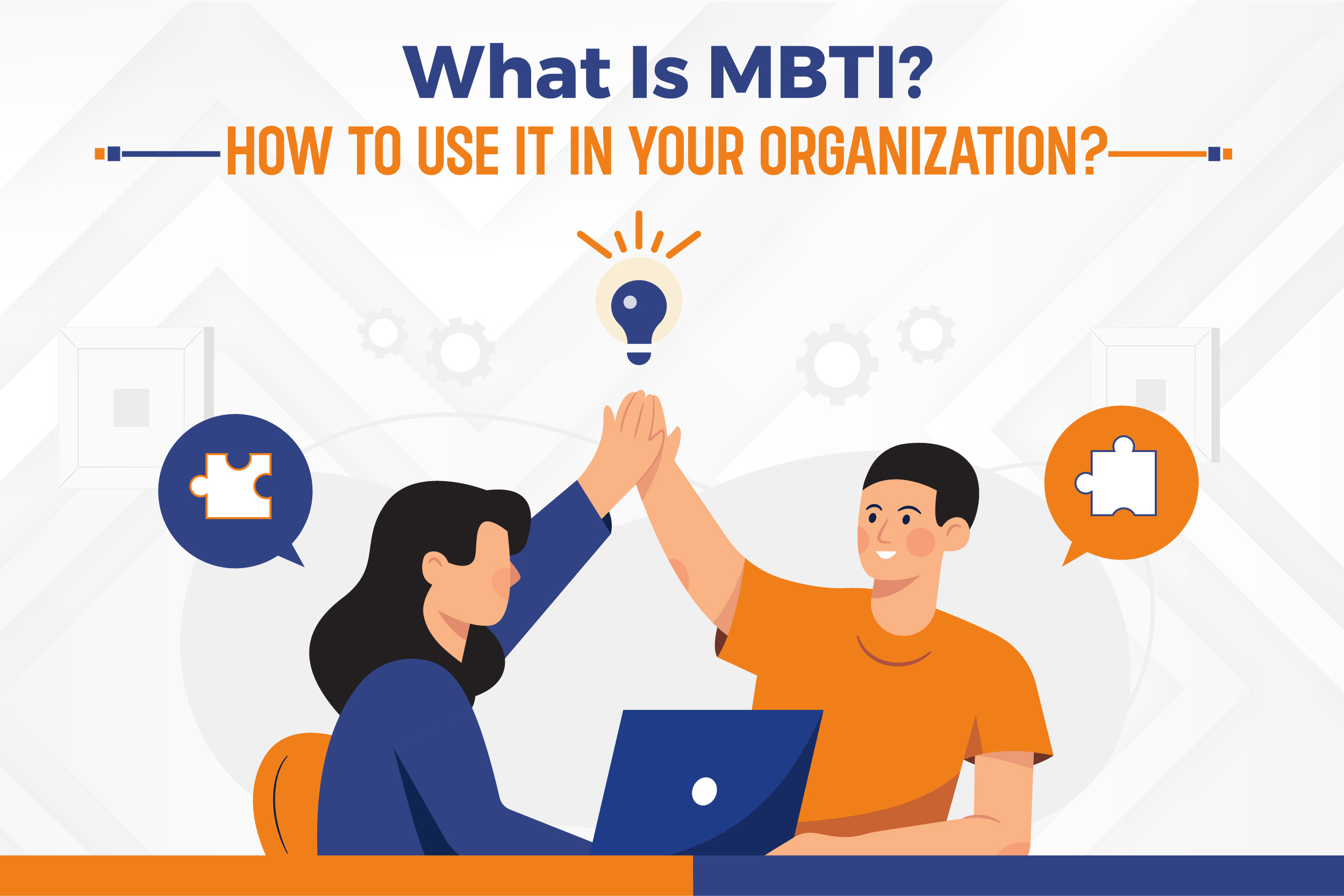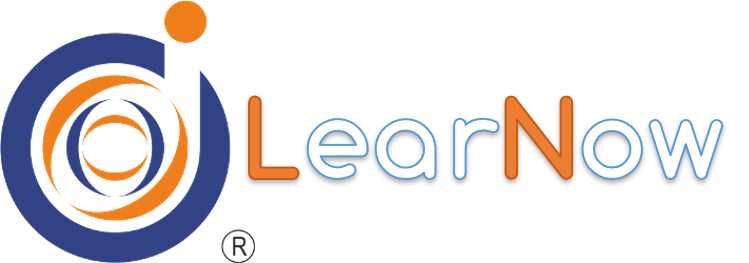
What Is MBTI? How To Use It In Your Organization?
Who doesn’t love to come across interesting facts! You are no exception! Having that said, we have a news for you which is not only informative but interesting as well. Do you know, each year, over 3.5 million assessments are given, and approximately 90% of Fortune 100 organizations utilize the MBTI assessment in the employment process or as a team-building activity! Well if not, then most certainly your next question would be; what is this MBTI? Yes, this is why we insist to read on and get your invaluable questions answered.
The Myers-Briggs Type Indicator (MBTI), the most widely used personality test in the globe, is completed by around 1.5 million individuals annually. While many people use the MBTI to better understand themselves and their associates, businesses also utilize it for a variety of purposes, including team building, employee motivation, and Leadership Development. As a result, let’s dive in to know more about how to use MBTI in your organization for its benefit.
What Is MBTI?
The Myers-Briggs Type Indicator (MBTI) is a psychometric questionnaire designed to measure psychological preferences in how people perceive the world and make decisions.
It is based on C. G. Jung's theory of psychological types. The MBTI was constructed by Katharine Cook Briggs and her daughter Isabel Myers, who was inspired by Jung's work. . They originally designed the MBTI in 1943 and it was published in 1964. The test was first published by CPP, Inc. from 1976 to 1978, and then by Consulting Psychologists Press from 1978 to 1980. In 1980, the testing began being administered independently of CPP, Inc., with David Keirsey becoming president.
The test's objective is to aid in your exploration of your own personality, including your preferences, dislikes, traits, and your shortcomings, and strengths. The MBTI consists of four scales:
- Extroversion vs. Introversion,
- Sensing vs. Intuition,
- Thinking vs. Feeling and
- Judging vs. Perceiving.
These four-letter codes, such as ISTJ or ENFP, are used to assume things about your personality type, potential job options, compatibility, and other factors. The Myers-Briggs personality test has significance for both individuals and corporations even though it is not supported by science.
How To Make The Most Out Of Your MBTI Personality Type
Through their MBTI findings, many people discover more about themselves, but they seldom relate their types with those of others. The MBTI sheds light on our thinking styles and interests, which helps us understand how we interact. Moreover, it is simpler to develop strategies to interact with someone more successfully once you are conscious of their personal characteristics. You may learn how to communicate with others in the workplace depending on their interests by using the following suggestions:
1. Extroversion Vs. Introversion
An introvert's life is often characterized by a preference to be alone or with just a few people they know. They also have an internal focus, meaning that they are more likely to think deeply about things and analyze their own thoughts.
On the other hand, an extrovert's life is often characterized by a preference for being around many people and for doing things in the external world. They also have an external focus, meaning that they tend to rely more on what their senses tell them than on the depth of their thoughts.
Before discussing their ideas and problems with others, introverts frequently give them extra contemplation. On the other side, extroverts frequently talk before they think and choose action over thinking. Extroverts may believe that Introverts make decisions too slowly, whereas Introverts may believe that Extroverts make haste decisions.
Introverts who interact with extraverts should:
- Put their attention on outcomes and actions
- Express themselves by speaking ebulliently.
- Prioritize taking action over thinking
Extroverts who interact with introverts should:
- Send a detailed strategy or suggestion.
- Allow introverts time to think things over before making a choice.
- wherever feasible, use writing to communicate
- Give those who don't talk a chance to be heard if there is silence
2. Sensing Vs Intuition
Intuitives are people who are more in tune with their feelings and emotions and can make decisions without relying on logical thinking. Sensors, on the other hand, are more logical thinkers and they rely on facts to make decisions.
The difference between sensors and intuitive is that sensors need to have a concrete idea of what they want or need before they take action. Intuitives don't always have a clear picture of what they want but they know that the right thing will come to them in time. When it comes to working together, sensors and intuitive often find it difficult because their decision-making process is different. Sensors don't understand how intuitive work with their feelings instead of logic while intuitive find sensors too rigid for their taste.
The following are the things Sensors should say to Intuitives:
- Rather than actual details, start with a general description of the task, challenge, or issue.
- Allow for imaginative enquiry before presenting the facts.
- Before talking about tactics, describe the objective and strategy.
- Describe the desired result and any probable obstacles.
Intuitives should do the following when speaking with Sensors:
- Clearly identify the problem they're attempting to solve
- Share pertinent information and facts
- Reduce risk factors or make required adjustments.
- Explain the successful implementation of desired tactics.
3. Thinking Vs. Feeling
A thinker is someone who relies on logic and reasoning, while a feeler is someone who relies on their emotions. These are two different ways of thinking, and they often have trouble understanding each other.
The thinker-feeler dichotomy can be often found in the workplace. There are many cases where thinkers and feelers deal with one another poorly because they don't understand the other's perspective. This can lead to misunderstandings, missed deadlines, and arguments at work that could have been avoided if both sides had understood the other's perspective from the beginning.
It's important for thinkers to understand that not everyone thinks like them, and for feelers to understand that not everyone feels like them either.
Therefore, while speaking with Feelers thinkers should follow the points mentioned below:
- Thinkers should strive to be detailed
- Shouldn’t pass judgment
- Consider the situation from their perspective.
- Take the helm with consideration for what matters to the participants.
- Consider how a choice will impact the people who will carry it out.
- Rather than discussing the negatives, begin with the positives.
When Feelers would communicate with Thinkers, they should:
- Discuss the benefits and costs of the points.
- Be precise when defining the problem, the underlying values, and the prospective outcomes, as well as their benefits and drawbacks.
- Briefly express their point of view.
- Be willing to debate without becoming emotional
4. Judging Vs. Perceiving
Judgers are people who like to plan and organize the future. They like to have everything laid out, and they want to see the results of their plans. Perceivers, on the other hand, are more laid back. They enjoy living in the moment and don't want to be tied down by plans.
Some people might think that these two personality types would never work together because they're so different from each other. But it's actually not that difficult - as long as both parties know what they're good at and what they need from each other, it's all good!
Whenever Judgers speak with Perceivers, they should:
- Give perceivers more discretion on how to accomplish their goals.
- Allot ample time for brainstorming
- Understand that there may be several right solutions and approaches to taking certain actions.
- Prior to making a final choice, take into account many choices.
- Recognize that if they attempt to over-direct Perceivers, they will encounter opposition.
Perceivers should do the following when speaking with Judgers:
- Recognize that frequent or last-minute modifications might have an impact on judgers.
- Considering their deadlines seriously
- Find a way to harmonize brainstorming with decision-making.
- Reopen choices only if fresh information significantly affects the decision.
- Make it obvious where they stand.
Key Takeaway
The MBTI is one of several methods to study and comprehend individuals, just like any other personality evaluation instrument. Particularly MBTI may improve workplace communication and teamwork. Communication styles may be greatly enhanced by being aware of the most effective methods to approach and speak with others.
You can make an informed estimate about a team member's MBTI type even if you don't know it. You can try a different type if your current ones don't work. To make your team more effective and possibly even happier, you can invite everyone to take the MBTI assessment.
